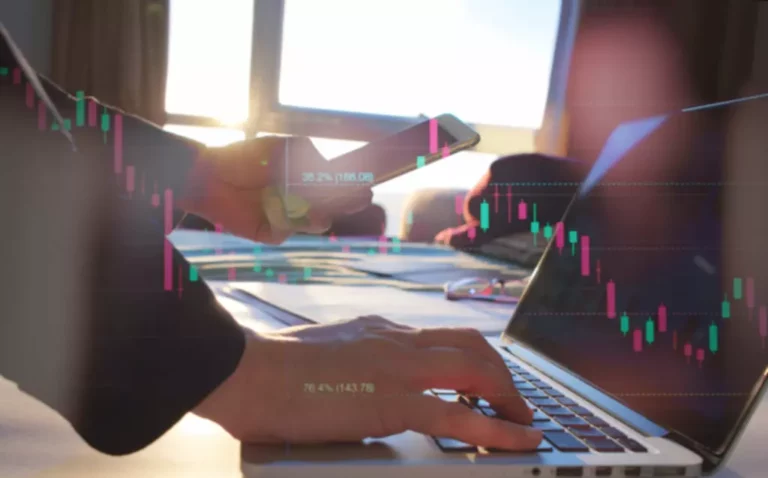Content
Payment for order flow (PFOF) is a form of compensation, usually in fractions of a penny per share, that a brokerage firm receives for directing orders and executing trades to a particular pfof meaning market maker or exchange. There are multiple risks that stem from PFOF in addition to these market makers taking the other side of your trade. For one, the prevalence of PFOF arrangements has moved a lot of the trading volume off of the public exchanges. Commission-free trading has allowed millions of new traders and investors to open accounts and participate in the stock market for the first time. PFOF has been the enabling factor, but the debate concerning the inherent conflicts of PFOF is ongoing.
Payment for Order Flow Questions
Proponents argue that it benefits small investors and improves market liquidity, while opponents argue that it leads to conflicts of interest and lower overall returns for investors. SEC Rule 605 requires that market makers publish their execution stats every month. Looking at the recent data, it shows that wholesaling saves customers money—$3.57 billion of price improvement in 2020 alone. When choosing a broker, traders should consider the broker’s PFOF practices and how they may impact the cost and quality of trading. Traders should also be aware of their rights and responsibilities, including the right to ask their broker about their PFOF practices and the responsibility to monitor their trade execution quality. It has led to the rise of zero-commission trading, where brokers waive their commission fees https://www.xcritical.com/ and instead earn revenue through PFOF.

The role of market makers in the stock market.
His main theme was the absence of a level playing field in the stock market—not everyone plays by the same rules; some big players have advantages. Gensler responded that, in fact, the SEC had issued numerous proposals on its agenda and even adopted some of them. Is it that the process takes just long enough for a new administration to come into power and then you don’t need to deal with it? FINRA Rule 5310 cites such compliance factors as price, volatility, relative liquidity, size and type of transaction, the number of markets checked, and accessibility of the quotation. It expects firms to use “reasonable diligence” in caring for best execution. In addition, broker-dealers must conduct “regular and rigorous” reviews of the execution quality of customer trades if they do not conduct individual compliance reviews of every transaction instead.
No such thing as a free trade: How Robinhood and others really profit from ‘PFOF’—and why it harms the markets
Suppose you (as a retail investor) pull up a quote on stock XYZ, with the intention of buying 100 shares. The concept of “payment for order flow” started in the early 1980s with the rise of computerized order processing. Market makers would share a portion of their profits with brokerages that routed orders directly to them.
Broker-Dealer Types: Fully Disclosed vs Omnibus vs Self-Clearing
Regardless of the future of PFOF, the principles of transparency, fairness, and best execution remain paramount in the trading industry. Traders should stay informed about the practices of their brokers and the implications of these practices for their trading activity. Another important consideration for traders is the quality of trade execution.
- The notion of paying no commissions on trades appealed to the masses as evidenced by the parabolic growth of the client-bases of certain fintech companies.
- If a broker-dealer offers free trading, that means they could be making their money through PFOF.
- The broker then routes the order to a market maker or other liquidity provider, who executes the order on behalf of the client.
- Plans are created using defined, objective criteria based on generally accepted investment theory; they are not based on your needs or risk profile.
- Changes in the complexity of trades involving equity, options, and cryptocurrency have come about as exchanges and electronic communication networks have proliferated.
- The reason why I want to know this information is I am finally ditching Northwestern Mutual in favor of low cost trading somewhere else.
In summary, Payment for Order Flow is a controversial practice that has both benefits and downsides for retail investors. While it can provide better prices and faster execution, it also creates a conflict of interest for brokers and gives market makers an unfair advantage. As always, it’s important for investors to do their research and understand the risks and benefits of any investment strategy. However, according to the SEC, brokerages have a fiduciary duty to offer investors the best possible price.
Shrinking the spreads, however, means less profit for the market makers––the “perverse incentive” that Congressman Torres cited. Investors seek quality price execution, and that starts with the right brokerage. Just as investors should research a company they’d like to invest in, they should also research the institutions they trade with, and know if it routes to market makers.
For the past 20 or so years, the spreads for most securities have continued to narrow. In order to combat this, market makers such as Citadel Securities have paid a small sum to brokerages in order for them to route their clients’ orders through them. In practice, price improvement (PI) is measured by comparing a trade’s execution price to the national best bid and offer (NBBO) and measured as the dollar amount of improvement divided by share price. Another measure is effective spread over quoted spread (EFQ), which measures how much of the quoted half-spread an investor paid to trade. For example, if a buy order executes at the quoted ask price, then EFQ is equal to 100% because the investor paid the full half-spread.
In fact, SEC Chair Gary Gensler said after the Gamestop saga that payment for order flow can raise real issues around conflicts of interest. Payment for order flow is a revenue model for brokers that allowed them to lower their commissions. Because of this, the EU decided to ban it from 2026, which will impact brokers like DEGIRO and Trade Republic. Robinhood, the zero-commission online broker, earned between 65% and 80% of its quarterly revenue from PFOF over the last several years. By reviewing this content, you agree that the information provided does not constitute legal or other professional advice. This content is not a substitute for obtaining legal advice from a qualified attorney licensed in your jurisdiction and you should not act or refrain from acting based on this content.

When an investor commits an order, their brokerage routes that order to a public exchange for execution. You’ve probably heard of “high frequency trading” (HFT)—the use of computer programs to transact stock orders very quickly to take advantage of short-term market movements. To compete with HFT players, market makers have to make very quick decisions when they quote prices, and ensure they don’t become stale against market movements. Thus, not only do they take on the risk of potential imbalances of buy and sell orders, but they have to do so quickly to stay in the game. On the other hand, Trader B using a DMA broker places a hidden order to sell 500 shares between the bid/ask spread getting filled without disturbing the momentum as prices continue higher. They illustrate how traders need to have the tools to capitalize on market inefficiencies, rather than fall victim to them.
This process has caused a bit of controversy in recent years, which is why some brokers like Public.com have opted out of the PFOF business model. Most brokers will pick the market maker that offers you the best price. But in the PFOF model, the market maker will pay the broker to handle these trades.
Depending on the balance of buy/sell orders in a given stock or on a given day, it’s common for market makers to not make any profit after accounting for all of the costs they incur to manage their risks. Given the competitive and narrow profit per trade margins at which they operate, market makers can lose significant money if they do not update their bids and offers when the market moves. When things go according to plan, market makers receive more and more orders and can often trade “inside” the published bid-ask spread—actually improving the price you receive compared to the best quoted price on any exchange. The spread, that is the difference between the bid price and the offer price in the market, is the implicit cost of being able to immediately trade (buy or sell) in the market.
For a very volatile security with a quote that moves all over the place, spreads can be VERY large. As long as the market maker is grabbing buys and sells equally, it should earn the spread, which represents a profit. Most market makers therefore have risk models around how imbalanced they allow their positions to be. Understanding the intricacies of Payment for Order Flow is just one aspect of becoming a savvy trader. At TIOmarkets, we’re committed to providing you with a transparent and fair trading environment.
It’s easy to get started when you open an investment account with SoFi Invest. You can invest in stocks, exchange-traded funds (ETFs), mutual funds, alternative funds, and more. SoFi doesn’t charge commissions, but other fees apply (full fee disclosure here). Routing orders to market makers instead of an exchange may also increase liquidity for customers. Since market makers are always standing by, willing to buy or sell, that means customers don’t need to worry about finding a buyer or seller for the order they want to place.

A person selling at that same moment would expect a price of $101.02 or better. Commission-free trading refers to $0 commissions charged on trades of US listed registered securities placed during the US Markets Regular Trading Hours in self-directed brokerage accounts offered by Public Investing. Keep in mind that other fees such as regulatory fees, Premium subscription fees, commissions on trades during extended trading hours, wire transfer fees, and paper statement fees may apply to your brokerage account. A Bond Account is a self-directed brokerage account with Public Investing.
